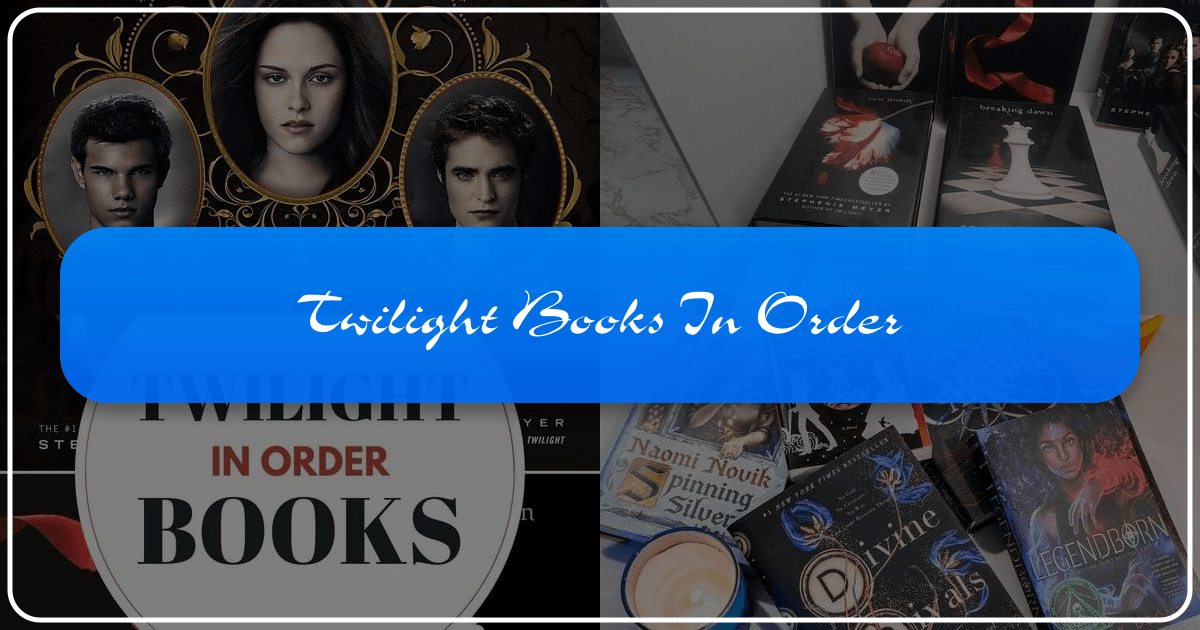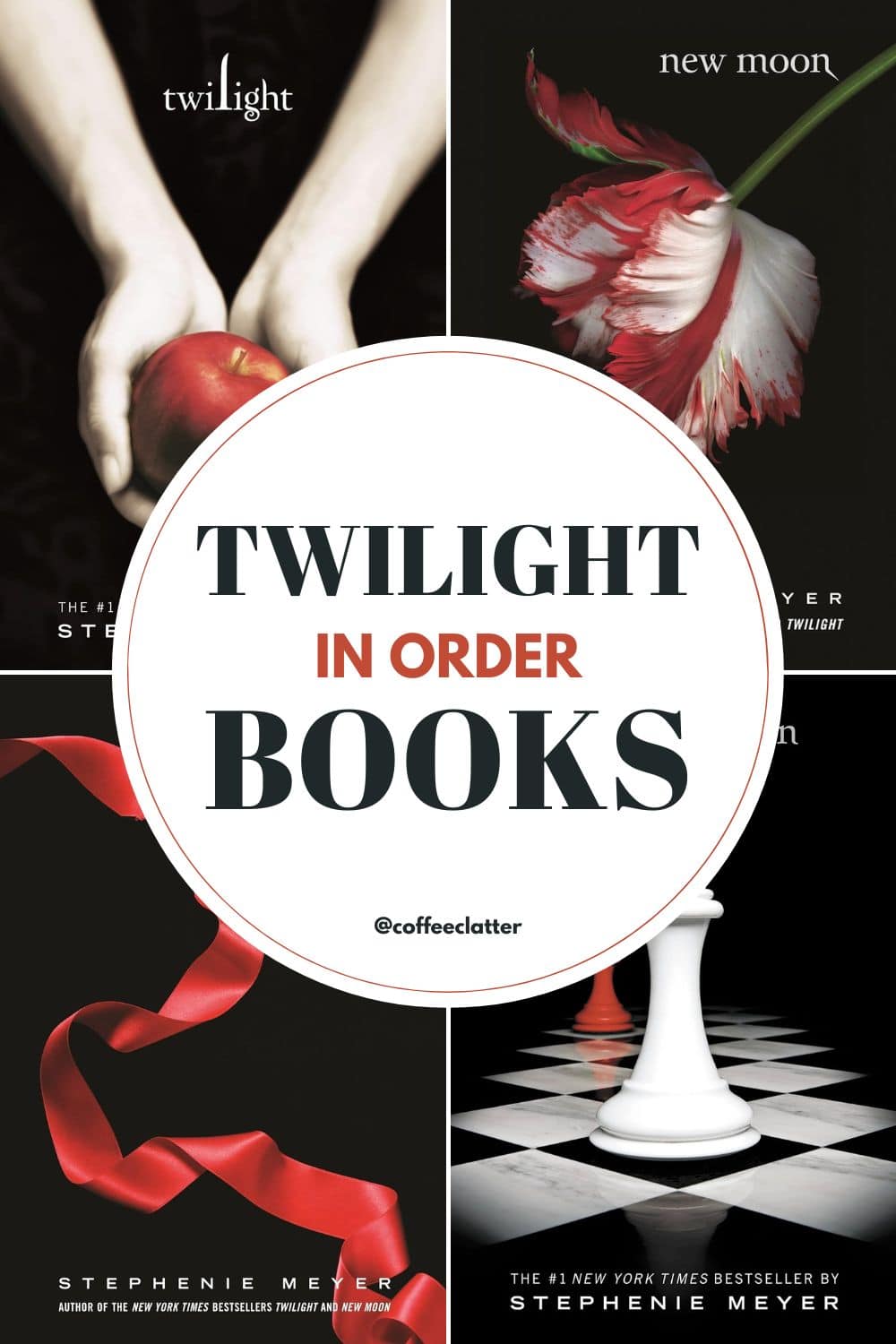Twilight Books in Order: A Comprehensive Guide

The Twilight saga, penned by Stephenie Meyer, has captivated millions worldwide since the release of Twilight in 2005. This phenomenal series, encompassing novels, novellas, and even a reimagined version, has left an undeniable mark on popular culture, influencing literature, film, and fan communities. This article will delve into the Twilight books in order, exploring various aspects related to the series, from its genre and literary merit to its widespread cultural impact.
The Twilight Saga: Books in Chronological Order
Before we dive into the specifics, let’s establish the reading order of the books in the Twilight saga:
- Twilight (2005): This inaugural novel introduces Bella Swan and her unexpected romance with the enigmatic vampire Edward Cullen. It sets the stage for the series’ central conflict: a teenage girl’s passionate love for a creature of the night. The story unfolds in the perpetually rainy town of Forks, Washington, setting a melancholic and suspenseful atmosphere.

-
New Moon (2006): The second installment follows the challenges Bella and Edward face as they navigate their unconventional relationship. Separated by circumstances, Bella finds solace in an unexpected friendship, while Edward wrestles with his inner turmoil and the ever-present threat to Bella’s safety.
-
Eclipse (2007): In this gripping installment, a series of mysterious murders bring Bella, Edward, and Jacob Black (a werewolf) together in an uneasy alliance. They must confront a shared enemy, the volatile Victoria, while dealing with the complexities of their own interconnected lives, further exploring the supernatural world and the choices that shape their destinies.
-
Breaking Dawn (2008): The culmination of Bella and Edward’s journey, Breaking Dawn, focuses on their marriage and the birth of their child, Renesmee. The challenges of parenthood, along with the threat posed by the Volturi (a powerful vampire coven), escalate the tension to new heights. The book explores the profound changes brought by parenthood and the sacrifices made to protect those they love.

-
The Short Second Life of Bree Tanner (2010): This novella offers a compelling glimpse into the Twilight world from a different perspective. It chronicles the brief life of Bree Tanner, a newborn vampire caught in the events of Eclipse, providing insights into the vampire perspective during the climax of that novel.
-
Midnight Sun (2020): This novel revisits the events of Twilight but narrates them entirely from Edward’s perspective. It offers a unique insight into Edward’s inner thoughts and feelings, adding depth and complexity to his character and relationship with Bella.

- Life and Death: Twilight Reimagined (2015): This reimagining of Twilight reverses the genders of Bella and Edward, transforming the narrative into a story of a human boy and a vampire girl named Beau and Edythe, exploring the classic theme of forbidden romance from a new angle.
Genre and Literary Analysis
The Twilight saga primarily falls under the Young Adult and Paranormal Romance genres. Meyer skillfully blends elements of romance, fantasy, and mystery, creating a captivating narrative that resonates with a diverse readership. While critiqued by some for its simplistic prose and predictable plot points, the series’ immense popularity speaks to its success in tapping into the emotional desires and fantasies of its target audience.
Romantic Themes:
The core of the Twilight saga is its exploration of intense, forbidden romance. The relationship between Bella and Edward is central to the plot and profoundly affects the narrative’s emotional trajectory. Meyer explores themes of infatuation, longing, sacrifice, and the complexities of love, particularly within an unconventional relationship. The series tackles the challenges of first love and the emotional intensity often associated with it. The inherent dangers of the vampire world and societal expectations further intensify the romantic tension.
Supernatural Elements:
The supernatural elements, vampires and werewolves, are central to the Twilight saga, but not merely as simple monsters. Meyer imbues these creatures with a mix of human-like qualities and inherent supernatural abilities, adding a layer of complexity beyond traditional vampire lore. The conflict between vampires and werewolves introduces themes of prejudice, acceptance, and co-existence. The supernatural also serves as a metaphorical representation of the societal and personal challenges Bella and Edward face in their relationship.
Mystery and Suspense:
While romance is central, Meyer incorporates elements of mystery and suspense to keep readers engaged. The introduction of various antagonistic forces, such as Victoria in Eclipse and the Volturi in Breaking Dawn, creates a sense of danger and uncertainty, enhancing the overall narrative. The mysterious nature of Edward’s past and the secrets of the vampire and werewolf worlds further add to the plot’s intrigue. The exploration of dangerous elements within the supernatural world keeps the narrative emotionally invested.
Cultural Impact and Adaptations
The Twilight saga has had a profound cultural impact, extending far beyond its literary merits.
Literary Influence:
The series’ enormous success prompted a surge in popularity of paranormal romance and young adult fiction featuring supernatural elements. Meyer’s work has inspired numerous authors to explore similar themes and tropes, significantly impacting the literary landscape of the genre. The Twilight series has opened the doors for numerous young adult authors to similarly write paranormal romance.
Film Adaptations:
The Twilight novels were adapted into a series of five highly successful feature films. These adaptations further broadened the series’ reach, introducing Twilight to a wider audience that may not have otherwise engaged with the books. The films’ box office success solidified the series’ place in popular culture, influencing other adaptations of young adult literature. The film adaptations have become a phenomenon in and of themselves.
Awards and Recognition:
While Twilight didn’t win any major literary awards, its immense commercial success and cultural impact have been widely acknowledged. Its influence on the YA and paranormal romance genres is undeniable and has been a focal point in discussions about young adult literature. This in itself is considered to be an award.
Fan Communities:
The Twilight saga spawned a vast and dedicated fan community, contributing significantly to its longevity and cultural significance. Fans created countless works of fanfiction, fan art, and online forums, fostering creative expression and community building. The sustained engagement of this fanbase demonstrates the enduring power of Meyer’s story and characters. The creation of fan communities is part of the series’ lasting legacy.
The Books4People and Amazon Perspectives
The descriptions provided by various online retailers, such as Books4People and Amazon, highlight the book’s popularity and offer various purchasing options. These descriptions often focus on specific aspects of the series, such as the romantic plotline, the supernatural elements, and the overall suspenseful nature of the saga. The different retailers also offer a variety of formats, including paperback, hardcover, and ebook versions, showcasing the widespread appeal and availability of the series.
In Conclusion:
The Twilight saga, while not without its literary detractors, remains a cultural phenomenon. Its impact on young adult literature and popular culture is undeniable, shaped by its blend of romance, fantasy, and suspense, Its lasting influence is evidenced by its numerous adaptations, its continued popularity, and the vast and engaged fan community it continues to inspire. The books’ chronological order provides a framework for experiencing the unfolding romance, supernatural conflicts, and emotional journey that have made this saga a global literary sensation.